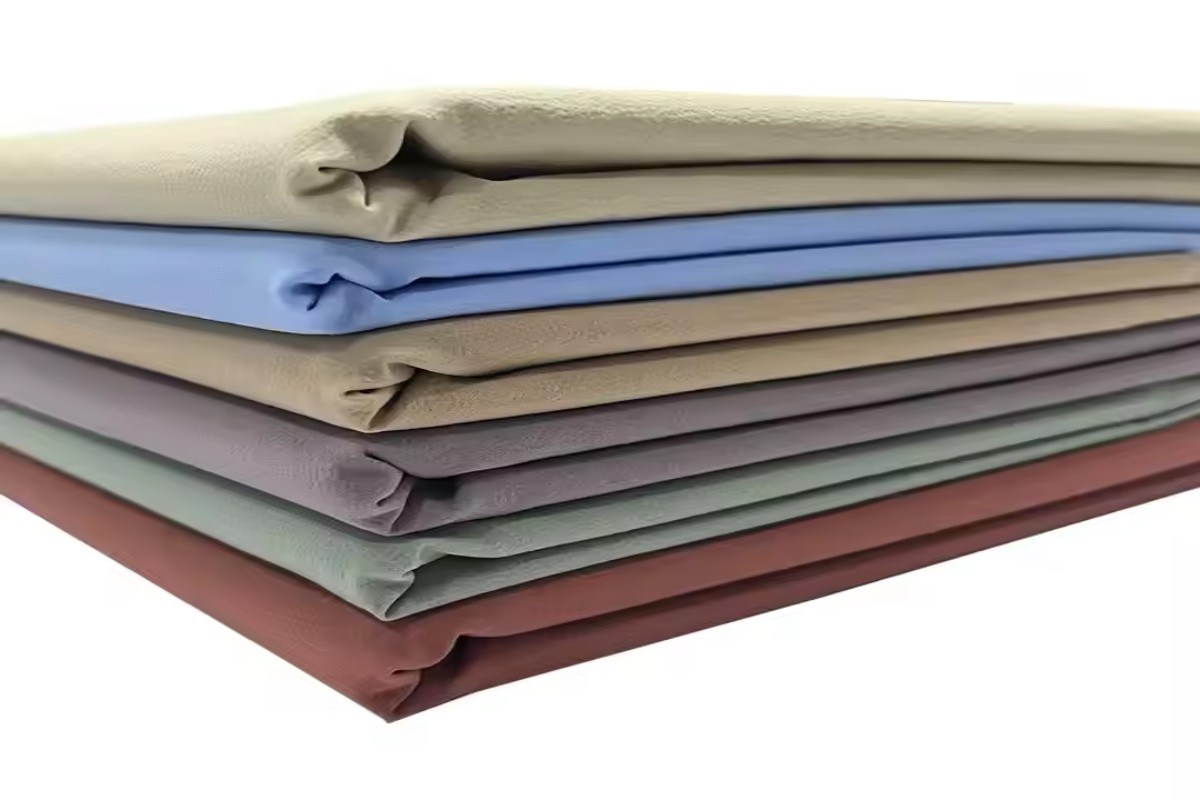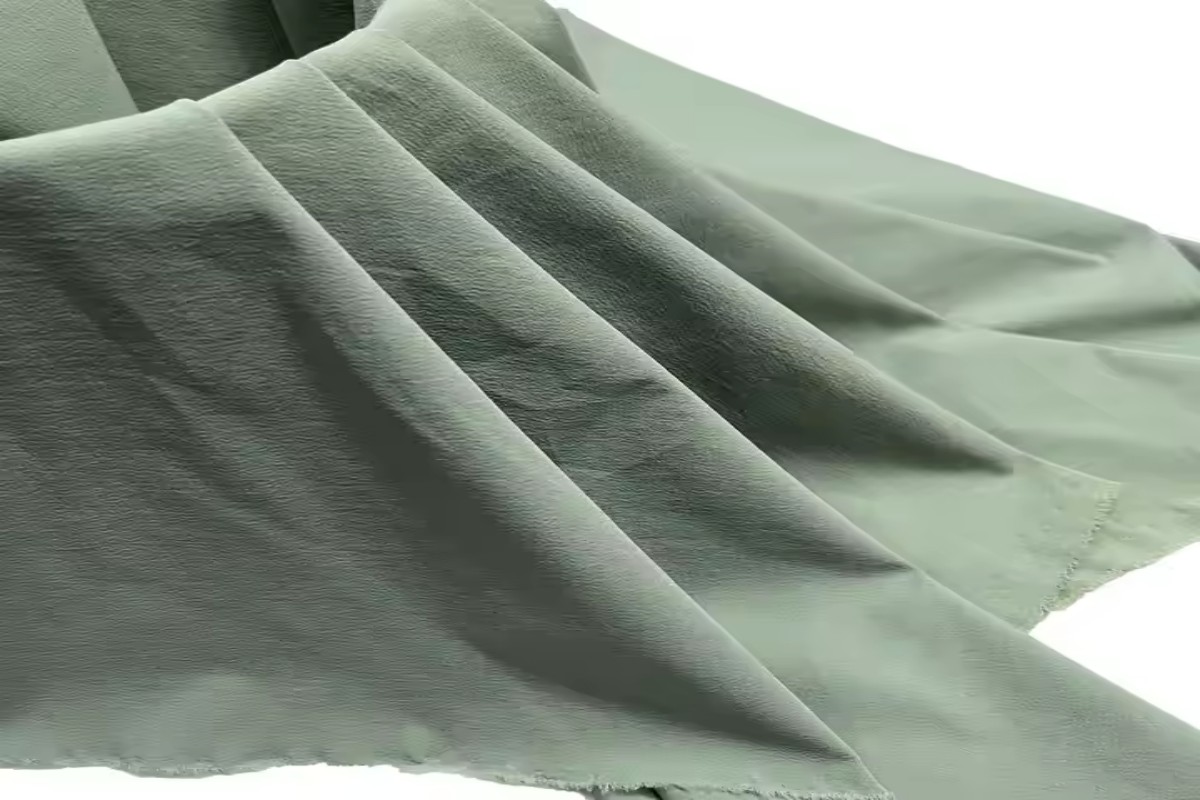Dyeing nylon spandex fabric, especially when working with materials like nylon swimwear fabric, comes with unique challenges. While nylon absorbs dye effectively, spandex resists it, making it tricky to achieve consistent results. This issue becomes even more complex when dealing with 4 way spandex fabric due to its high elasticity. When attempting to dye nylon stretch dye fabric or dye polyester nylon spandex fabric, improper techniques can result in uneven coloration or even damage. Therefore, specialized methods are crucial for successfully dyeing these fabrics.
Key Takeaways
- Nylon takes in dye easily but needs acid dyes and heat. Wash the fabric first to remove dirt for even color.
- Spandex does not absorb dye well and needs disperse dyes. Use low heat to keep spandex stretchy while dyeing.
- For even color, dye nylon first with acid dyes. Then, use disperse dyes for spandex. Always test on a small piece before dyeing the whole fabric.
Challenges in Dyeing Nylon Spandex Fabric
Nylon’s Dye Affinity and Requirements
Nylon fibers have a strong affinity for dyes, which makes them relatively easy to color. However, this process requires specific conditions to achieve the best results. You need to use acid dyes, as they bond well with nylon’s chemical structure. These dyes work effectively in a slightly acidic environment, typically achieved by adding vinegar or citric acid to the dye bath. Temperature also plays a critical role. Nylon absorbs dye better at high temperatures, often around 185°F (85°C).
Despite its dye-friendly nature, nylon can still pose challenges. Uneven dyeing may occur if the fabric isn’t prepared properly. Pre-washing the material to remove oils or residues is essential. Additionally, nylon’s ability to absorb dye quickly can lead to patchy results if the dye bath isn’t stirred consistently. When you dye nylon spandex fabric, these factors become even more important due to the blend’s unique characteristics.
Spandex’s Resistance to Dye Absorption
Spandex, on the other hand, resists dye absorption. Its synthetic composition and elastic properties make it less receptive to most dyes. Unlike nylon, spandex doesn’t bond well with acid dyes. Instead, it requires disperse dyes, which are designed for synthetic fibers. Even with these dyes, spandex absorbs color unevenly and often appears lighter than nylon in the same blend.
Another challenge arises from spandex’s sensitivity to heat. High temperatures, which are necessary for dyeing nylon, can weaken or damage spandex fibers. This creates a delicate balance when you dye nylon spandex fabric. You must carefully control the temperature to avoid compromising the fabric’s elasticity while still achieving vibrant colors. Specialized techniques, such as low-temperature dyeing, can help address this issue.
Compatibility Issues in Dyeing Nylon Spandex Fabric
Different Dyeing Conditions for Nylon and Spandex
When you dye nylon spandex fabric, the biggest challenge comes from the different dyeing conditions required for each fiber. Nylon absorbs acid dyes effectively in a hot, acidic environment. Spandex, however, responds better to disperse dyes, which work under different conditions. This mismatch makes it difficult to achieve uniform color across the fabric.
You must carefully balance the dyeing process to accommodate both fibers. For example, using acid dyes for nylon might leave spandex under-dyed or unevenly colored. On the other hand, using disperse dyes for spandex may not bond well with nylon. This incompatibility often results in a fabric where the nylon appears vibrant, but the spandex looks dull or faded.
To address this, you can use a two-step dyeing process. First, dye the nylon fibers with acid dyes. Then, apply disperse dyes to the spandex. While this method improves color consistency, it requires extra time and effort.
Risk of Heat Damage to Spandex
Spandex is highly sensitive to heat, which complicates the dyeing process. Nylon requires high temperatures to absorb dye effectively, but exposing spandex to such heat can weaken its elasticity. Overheating may cause the spandex fibers to lose their stretch or even break down entirely.
To prevent damage, you should monitor the temperature closely during the dyeing process. Low-temperature dyeing techniques can help protect the spandex while still allowing the nylon to absorb color. Using professional-grade dyes and equipment also reduces the risk of heat-related issues.
By understanding these compatibility challenges, you can take steps to achieve better results when dyeing nylon spandex fabric.
Elasticity and Its Impact on Dyeing
Uneven Dye Distribution Due to Stretch
Elasticity plays a significant role in how fabric absorbs dye. When you dye nylon spandex fabric, the stretchiness of the material can cause uneven dye distribution. This happens because the fabric stretches during the dyeing process, creating areas where the fibers are more exposed. These stretched sections absorb dye differently compared to the relaxed parts, leading to inconsistent coloration.
To minimize this issue, you should avoid stretching the fabric while dyeing. Keeping the material in its natural, relaxed state ensures that the dye penetrates evenly. Stirring the dye bath gently and consistently also helps distribute the color more uniformly. If you’re working with highly elastic fabrics, consider using professional-grade dyes designed for stretch materials. These dyes often provide better results and reduce the risk of patchy colors.
Tip: Always test a small piece of fabric before dyeing the entire garment. This helps you identify potential issues with uneven dyeing.
Post-Dyeing Elasticity Loss
Another challenge you may face is the loss of elasticity after dyeing. Spandex fibers, which give the fabric its stretch, are sensitive to heat and chemicals. High temperatures or prolonged exposure to dyes can weaken these fibers, causing the fabric to lose its ability to stretch and recover.
To preserve elasticity, use low-temperature dyeing methods whenever possible. Avoid leaving the fabric in the dye bath for too long. After dyeing, rinse the material thoroughly with cool water to remove any residual chemicals. Proper care during and after the dyeing process helps maintain the fabric’s stretch and overall quality.
By understanding how elasticity impacts dyeing, you can take steps to achieve better results and prolong the life of your fabric.
Dyeing nylon spandex fabric presents unique challenges due to the distinct properties of its fibers. You can achieve better results by understanding these difficulties and applying specialized techniques. Professional services also offer valuable expertise. Always use appropriate dyes and handle the fabric with care to maintain its quality and achieve consistent color.
FAQ
How can you achieve uniform color when dyeing nylon spandex fabric?
- Use professional-grade dyes designed for blends.
- Keep the fabric relaxed during dyeing.
- Stir the dye bath gently and consistently.
Tip: Always test a small fabric piece before dyeing the entire garment.
What type of dye works best for nylon spandex blends?
Acid dyes work well for nylon, while disperse dyes suit spandex. Use a two-step process or specialized dyes for better results.
Can you dye nylon spandex fabric at home?
Yes, but it requires careful temperature control and the right dyes. Professional services may offer better results for complex blends.
Post time: Apr-02-2025




